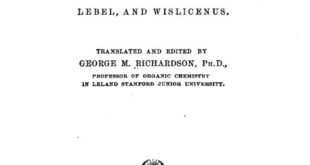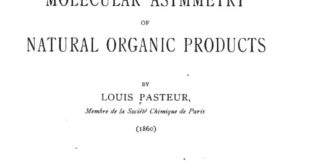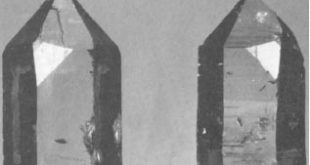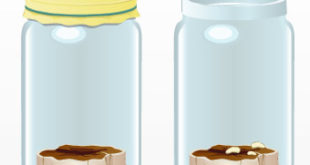Germ Theory And Its Applications To Medicine And Surgery 1
The Sciences gain by mutual support. When, as the result of my first communications on the fermentations in 1857-1858, it appeared that the ferments, properly so-called, are living beings, that the germs of microscopic organisms abound in the surface of all objects, in the air and in water; that the theory of spontaneous generation is chimerical; that wines, beer, vinegar, the blood, urine and all the fluids of the body undergo none of their usual changes in pure air, both Medicine and Surgery received fresh stimulation. A French physician, Dr. Davaine, was fortunate in making the first application of these principles to Medicine, in 1863.
Our researches of last year, left the etiology of the putrid disease, or septicemia, in a much less advanced condition than that of anthrax. We had demonstrated the probability that septicemia depends upon the presence and growth of a microscopic body, but the absolute proof of this important conclusion was not reached. To demonstrate experimentally that a microscopic organism actually is the cause of a disease and the agent of contagion, I know no other way, in the present state of Science, than to subject the microbe (the new and happy term introduced by M. Sedillot) to the method of cultivation out of the body. It may be noted that in twelve successive cultures, each one of only ten cubic centimeters volume, the original drop will be diluted as if placed in a volume of fluid equal to the total volume of the earth. It is just this form of test to which M. Joubert and I subjected the anthrax bacteridium.2 Having cultivated it a great number of times in a sterile fluid, each culture being started with a minute drop from the preceding, we then demonstrated that the product of the last culture was capable of further development and of acting in the animal tissues by producing anthrax with all its symptoms. Such is – as we believe – the indisputable proof that anthrax is a bacterial disease.
Our researches concerning the septic vibrio had not so far been convincing, and it was to fill up this gap that we resumed our experiments. To this end, we attempted the cultivation of the septic vibrio from an animal dead of septicemia. It is worth noting that all of our first experiments failed, despite the variety of culture media we employed – urine, beer yeast water, meat water, etc. Our culture media were not sterile, but we found most commonly – a microscopic organism showing no relationship to the septic vibrio, and presenting the form, common enough elsewhere, of chains of extremely minute spherical granules possessed of no virulence whatever.3 This was an impurity, introduced, unknown to us, at the same time as the septic vibrio; and the germ undoubtedly passed from the intestines – always inflamed and distended in septicemic animals – into the abdominal fluids from which we took our original cultures of the septic vibrio. If this explanation of the contamination of our cultures was correct, we ought to find a pure culture of the septic vibrio in the heart’s blood of an animal recently dead of septicemia. This was what happened, but a new difficulty presented itself; all our cultures remained sterile. Furthermore this sterility was accompanied by loss in the culture media of (the original) virulence.
It occurred to us that the septic vibrio might be an obligatory anaerobe and that the sterility of our inoculated culture fluids might be due to the destruction of the septic vibrio by the atmospheric oxygen dissolved in the fluids. The Academy may remember that I have previously demonstrated facts of this nature in regard to the vibrio of butyric fermentation, which not only lives without air but is killed by the air.
It was necessary therefore to attempt to cultivate the septic vibrio either in a vacuum or in the presence of inert gases-such as carbonic acid.
Results justified our attempt; the septic vibrio grew easily in a complete vacuum, and no less easily in the presence of pure carbonic acid.
These results have a necessary corollary. If a fluid containing septic vibrios be exposed to pure air, the vibrios should be killed and all virulence should disappear. This is actually the case. If some drops of septic serum be spread horizontally in a tube and in a very thin layer, the fluid will become absolutely harmless in less than half a day, even if at first it was so virulent as to produce death upon the inoculation of the smallest portion of a drop.
Furthermore all the vibrios, which crowded the liquid as motile threads, are destroyed and disappear. After the action of the air, only fine amorphous granules can be found, unfit for culture as well as for the transmission of any disease whatever. It might be said that the air burned the vibrios.
If it is a terrifying thought that life is at the mercy of the multiplication of these minute bodies, it is a consoling hope that Science will not always remain powerless before such enemies, since for example at the very beginning of the study we find that simple exposure to air is sufficient at times to destroy them.
But, if oxygen destroys the vibrios, how can septicemia exist, since atmospheric air is present everywhere? How can such facts be brought in accord with the germ theory? How can blood, exposed to air, become septic through the dust the air contains?
All things are hidden, obscure and debatable if the cause of the phenomena be unknown, but everything is clear if this cause be known. What we have just said is true only of a septic fluid containing adult vibrios, in active development by fission: conditions are different when the vibrios are transformed into their germs,4 that is into the glistening corpuscles first described and figured in my studies on silk-worm disease, in dealing with worms dead of the disease called “flacherie.” Only the adult vibrios disappear, burn up, and lose their virulence in contact with air: the germ corpuscles, under these conditions, remain always ready for new cultures, and for new inoculations.
All this however does not do away with the difficulty of understanding how septic germs can exist on the surface of objects, floating in the air and in water.
Where can these corpuscles originate? Nothing is easier than the production of these germs, in spite of the presence of air in contact with septic fluids.
If abdominal serous exudate containing septic vibrios actively growing by fission be exposed to the air, as we suggested above, but with the precaution of giving a substantial thickness to the layer, even if only one centimeter be used, this curious phenomenon will appear in a few hours. The oxygen is absorbed in the upper layers of the fluid – as is indicated by the change of color. Here the vibrios are dead and disappear. In the deeper layers, on the other hand, towards the bottom of this centimeter of septic fluid we suppose to be under observation, the vibrios continue to multiply by fission-protected from the action of oxygen by those that have perished above them: little by little they pass over to the condition of germ corpuscles with the gradual disappearance of the thread forms. So that instead of moving threads of varying length, sometimes greater than the field of the microscope, there is to be seen only a number of glittering points, lying free or surrounded by a scarcely perceptible amorphous mass.5 Thus is formed, containing the latent germ life, no longer in danger from the destructive action of oxygen, thus, I repeat, is formed the septic dust, and we are able to understand what has before seemed so obscure; we can see how putrescible fluids can be inoculated by the dust of the air, and how it is that putrid diseases are permanent in the world.
The Academy will permit me, before leaving these interesting results, to refer to one of their main theoretical consequences. At the very beginning of these researches, for they reveal an entirely new field, what must be insistently demanded? The absolute proof that there actually exist transmissible, contagious, infectious diseases of which the cause lies essentially and solely in the presence of microscopic organisms. The proof that for at least some diseases, the conception of spontaneous virulence must be forever abandoned – as well as the idea of contagion and an infectious element suddenly originating in the bodies of men or animals and able to originate diseases which propagate themselves under identical forms: and all of those opinions fatal to medical progress, which have given rise to the gratuitous hypotheses of spontaneous generation, of albuminoid ferments, of hemiorganisms, of archebiosis, and many other conceptions without the least basis in observation. What is to be sought for in this instance is the proof that along with our vibrio there does not exist an independent virulence belonging to the surrounding fluids or solids, in short that the vibrio is not merely an epiphenomenon of the disease of which it is the obligatory accompaniment. What then do we see, in the results that I have just brought out? A septic fluid, taken at the moment that the vibrios are not yet changed into germs, loses its virulence completely upon simple exposure to the air, but preserves this virulence, although exposed to air on the simple condition of being in a thick layer for some hours. In the first case, the virulence once lost by exposure to air, the liquid is incapable of taking it on again upon cultivation: but, in the second case, it preserves its virulence and can propagate, even after exposure to air. It is impossible, then, to assert that there is a separate virulent substance, either fluid or solid, existing, apart from the adult vibrio or its germ. Nor can it be supposed that there is a virus which loses its virulence at the moment that the adult vibrio dies; for such a substance should also lose its virulence when the vibrios, changed to germs, are exposed to the air. Since the virulence persists under these conditions it can only be due to the germ corpuscles – the only thing present. There is only one possible hypothesis as to the existence of a virus in solution, and that is that such a substance, which was present in our experiment in non-fatal amounts, should be continuously furnished by the vibrio itself, during its growth in the body of the living animal. But it is of little importance since the hypothesis supposes the forming and necessary existence of the vibrio.6
I hasten to touch upon another series of observations which are even more deserving the attention of the surgeon than the preceding: I desire to speak of the effects of our microbe of pus when associated with the septic vibrio. There is nothing more easy to superpose – as it were – two distinct diseases and to produce what might be called a septicemic purulent infection, or a purulent septicemia. Whilst the microbe-producing pus, when acting alone, gives rise to a thick pus, white, or sometimes with a yellow or bluish tint, not putrid, diffused or enclosed by the so-called pyogenic membrane, not dangerous, especially if localized in cellular tissue, ready, if the expression may be used for rapid resorption; on the other hand the smallest abscess produced by this organism when associated with the septic vibrio takes on a thick gangrenous appearance, putrid, greenish and infiltrating the softened tissues. In this case the microbe of pus carried so to speak by the septic vibrio, accompanies it throughout the body: the highly-inflamed muscular tissues, full of serous fluid, showing also globules of pus here and there, are like a kneading of the two organisms.
By a similar procedure the effects of the anthrax bacteridium and the microbe of pus may be combined and the two diseases may be superposed, so as to obtain a purulent anthrax or an anthracoid purulent infection. Care must be taken not to exaggerate the predominance of the new microbe over the bacteridium. If the microbe be associated with the latter in sufficient amount it may crowd it out completely-prevent it from growing in the body at all. Anthrax does not appear, and the infection, entirely local, becomes merely an abscess whose cure is easy. The microbe-producing pus and the septic vibrio (not)7 being both anaerobes, as we have demonstrated, it is evident that the latter will not much disturb its neighbor. Nutrient substances, fluid or solid, can scarcely be deficient in the tissues from such minute organisms. But the anthrax bacteridium is exclusively aerobic, and the proportion of oxygen is far from being equally distributed throughout the tissues: innumerable conditions can diminish or exhaust the supply here and there, and since the microbe-producing pus is also aerobic, it can be understood how, by using a quantity slightly greater than that of the bacteridium it might easily deprive the latter of the oxygen necessary for it. But the explanation of the fact is of little importance: it is certain that under some conditions the microbe we are speaking of entirely prevents the development of the bacteridium.
Summarizing – it appears from the preceding facts that it is possible to produce at will, purulent infections with no elements of putrescence, putrescent purulent infections, anthracoid purulent infections, and finally combinations of these types of lesions varying according to the proportions of the mixtures of the specific organisms made to act on the living tissues.
These are the principal facts I have to communicate to the Academy in my name and in the names of my collaborators, Messrs. Joubert and Chamberland. Some weeks ago (Session of the 11th of March last) a member of the Section of Medicine and Surgery, M. Sedillot, after long meditation on the lessons of a brilliant career, did not hesitate to assert that the successes as well as the failures of Surgery find a rational explanation in the principles upon which the germ theory is based, and that this theory would found a new Surgery – already begun by a celebrated English surgeon, Dr. Lister,8 who was among the first to understand its fertility. With no professional authority, but with the conviction of a trained experimenter, I venture here to repeat the words of an eminent confrere.
1 Read before the French Academy of Sciences, April 29th, 1878. Published in Comptes rendus de l’Academie des Sciences, lxxxvi., pp. 1037-43.
2 In making the translation, it seems wiser to adhere to Pasteur’s nomenclature. Bacillus anthracis would be the term employed to-day. Translator.
3 It is quite possible that Pasteur was here dealing with certain septicemic streptococci that are now known to lose their virulence with extreme rapidity under artificial cultivation. – Translator.
4 By the terms “germ” and “germ corpuscles,” Pasteur undoubtedly means “spores,” but the change is not made, in accordance with note 2, p. 364 – Translator.
5 In our note of July 16th, 1877, it is stated that the septic vibrio is not destroyed by the oxygen of the air nor by oxygen at high tension, but that under these conditions it is transformed into germ corpuscles. This is, however, an incorrect interpretation of facts. The vibrio is destroyed by oxygen, and it is only where it is in a thick layer that it is transformed to germ-corpuscles in the presence of oxygen and that its virulence is preserved.
6 The regular limits oblige me to omit a portion of my speech.
7 There is undoubtedly a mistake in the original. Pasteur could not have meant to say that both bacteria are anaerobes. The word “not” is introduced to correct the error. – Translator.
8 See Lord Lister’s paper in the present volume. – Ed.
 Pasteur Brewing Louis Pasteur – Science, Health, and Brewing
Pasteur Brewing Louis Pasteur – Science, Health, and Brewing 



